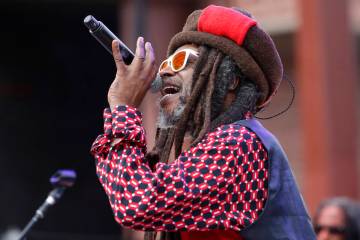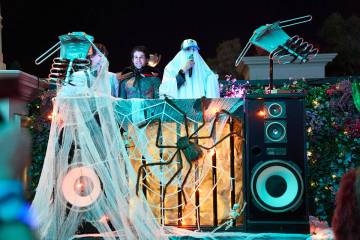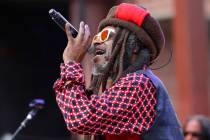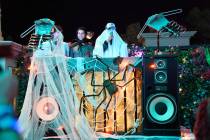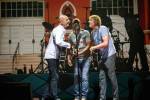American String Quartet deserves larger audience
The American String Quartet, arguably one of the world’s finest string quartets, gave a breathtaking performance Thursday at UNLV’s Doc Rando Recital Hall. It’s too bad so many valley residents missed it, with only about 150 people in attendance.
The American String Quartet was founded nearly 40 years ago. Two original members, violinist Laurie Carney and violist Daniel Avshalomov, are still with the group. There have been only two replacements: violinist Peter Winograd, who joined in 1990, and cellist Wolfram Koessel, who signed on in 2006. Winograd’s father, Arthur, was a founding member of New York’s famed Juilliard Quartet.
The American Quartet is in residence at the Manhattan School of Music and has been there for some time. Other notable residencies, past and present, include the Aspen Music School and Baltimore’s Peabody Conservatory. (Full disclosure: I was associate dean of the conservatory in 1980 when the quartet began its 10-year relationship there and was strongly in favor of the appointment of this young up-and-coming ensemble.)
Thursday’s program began with Mozart’s “Quartet in D Major” for flute, violin, viola and cello. The piece calls for the first violinist (Winograd) to give way to a solo flautist, in this case Jennifer Grim. Grim is an associate professor of music at UNLV, but her obvious talent and musicianship earns her a solo spot with the American Quartet or any other first-rate professional ensemble no matter where they’re based.
The work’s opening movement is marked allegro, but the brisk tempo that prevailed made for a playful image of radiant sunshine and an air of optimism. There followed a brief adagio, but even the reduced tempo couldn’t override the brightness that shone through. The final movement was a rondo that brought us back to the original sprightly romp. There were some intonation difficulties for the cello in spots, but that’s one of the dangers of one-to-a-part: there are no additional players to fall back on.
This brings us to “String Quartet in Bb Major” by Johannes Brahms. The first movement might be as close as Brahms ever got to being cheerful; however, it never reached the point of being overly emotional. From the players it demands both musical vitality and virtuoso technique. The second movement is an andante that, at its key moments, inspired a rich, smooth buttery sound. The playing was exquisite.
Movement three called for three players to use mutes (yes, there are mutes for stringed instruments; they change the tonal color markedly) but in this movement the viola is the principal solo instrument and does not use a mute. Avshalomov made his Amati instrument sing eloquently.
The final movement begins as if it will be a rustic country dance but quickly moves into challenging rhythmic complexity, leading to a rousing finale.
After intermission we heard Felix Mendelssohn’s String Quartet in E Minor from his Opus 44. If the Brahms can be thought of as a sunny departure from the composer’s familiar shadowed side, this Mendelssohn work does the opposite; it explores the darker side of his more typical bright and vital work. The third movement in particular, marked andante, is almost hauntingly melodic.
Again, it’s too bad so few turned out for the concert, but those who did witnessed a masterpiece.
REVIEW
Who: The American String Quartet
When: Thursday
Where: Doc Rando Recital Hall, UNLV
Grade: A




